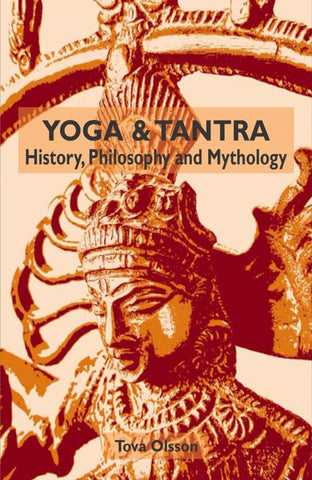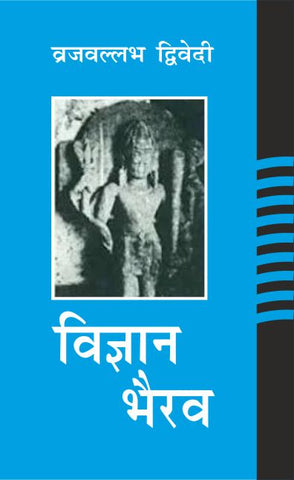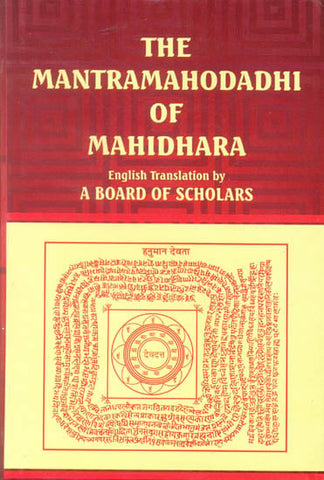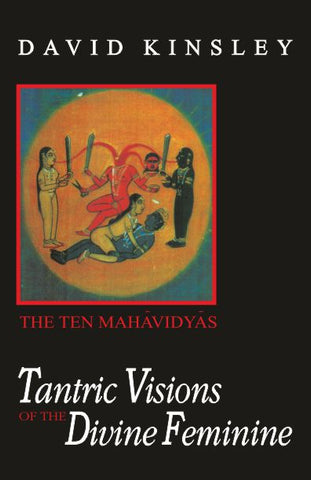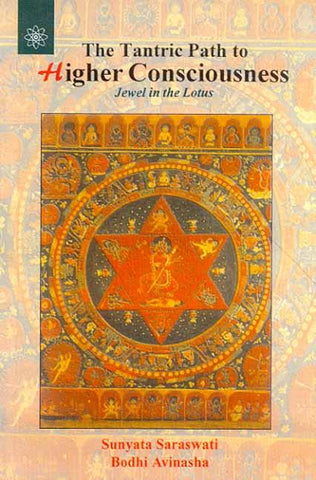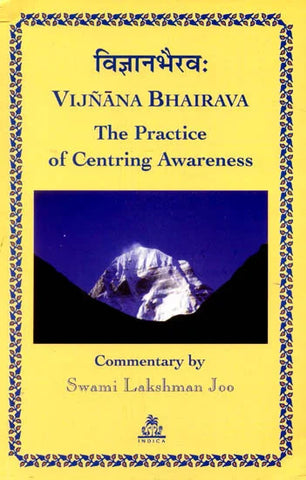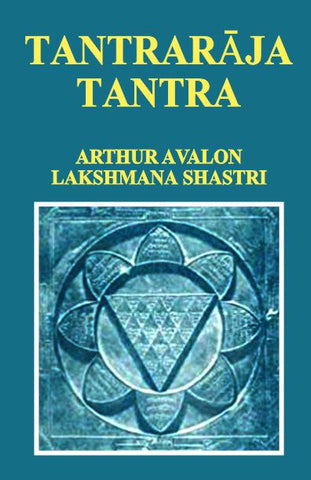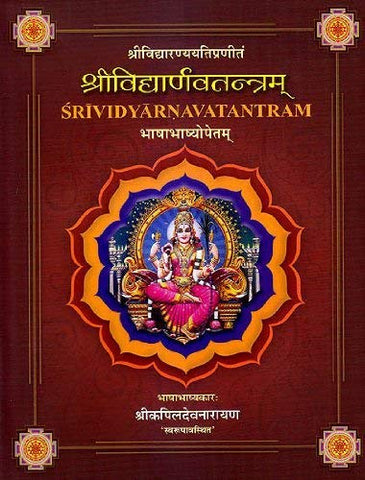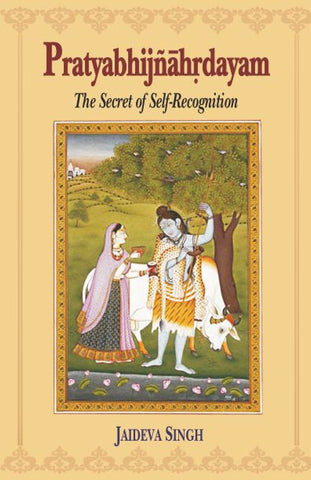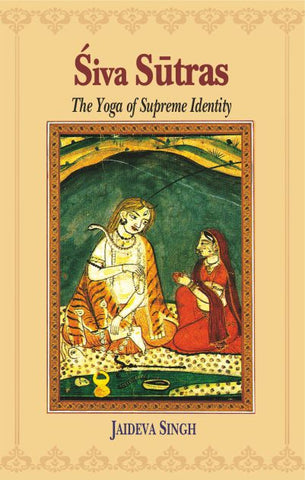Your cart is empty now.
The present work is a defence of the Tantra, of which Sastra the author is an adherent and a polemic, undertaken in the interests of Hindu orthodoxy in its Sakta and Tantrika form against secularism on the one hand, and on the other the religious eclecticism and various reforming movements, of which, when the book was first written, the Brahmasamaj was a leading type. In fact, in parts, the book reads like an orthodox Catholic protest against modernism and is thus interesting as showing how many fundamental principles are common to all orthodox forms of belief, whether of the West or of the East.
The author of the Tantratattva (on which this translation is based)is a well-known Tantrik Pandit, preacher, and secretary of the Sarvamgalasabha of Benares, who knew no English. His work, which is written in Bengali, may therefore be taken to be an accurate popular statement of modern orthodox views on the subject treated by him. The word Tattva is a very comprehensive one, which is by no means always easy to translate. The author has rendered the title of the book as Principles of Tantra, though, maybe, it should be Subjects of Tantra. The work deals with chosen topics of Tantra. This, however, also involves a statement of certain fundamental principles which govern Sastrik teaching on the subjects dealt with, and this as well as the contents of possible future volumes must be the justification for giving the book an ambitious title.
MEDIAEVAL "Hinduism" (to use a convenient, if somewhat vague, term) was, as its successor, modern Indian orthodoxy, is, largely Tantrik. The Tantra was then, as it is now, the great Mantra and Sadhana' Sastra (Scripture), and the main, where not the sole, source of some of the most fundamental concepts still prevalent as regards worship, images, initiation, yoga, the supremacy of Guru, and so forth. This, however, does not mean that all the injunctions which are to be found in the Sastra are of universal acceptance, as is pointed out in the Introduction which follows. This Introduction, however, is but a mere sketch of that which I hope to develop in a future volume after the ritual (in its widest sense) has been dealt with in detail. What is, in fact, wanted in this matter is an accurate statement of the facts; whereas up to now such cursory accounts of the Tantra as have appeared are as a rule mere general statements by way of condemnation of it.
One of the earliest of such accounts in English is contained in that interesting though biased and, in essential respects, ill-understanding work. written by W. Ward, and published by the Serampore Mission in 1818. In this book, Horace Hayman Wilson wrote, in his well-known "essays,"’? that Ward’s information was merely oral and might be regarded as un-satisfactory. It is a fuller account, however, than his own, and contains a certain amount of information which is fairly accurate with some which are not so. The author, however, like so many of his English successors, was influenced by a strong racial and credal bias, which in the old style he quite frankly and honestly displayed to view. With a strong faith in Protestant Christianity, he combined exaggerated notions of the universal piety and morals of his own people who professed it.' On the other hand, he wrote at a time when, according to his account, Hinduism was at a low ebb, and in its lower forms apparently productive of many evils, Contrasting, awesome of his; successors have since done, an over-painted picture of Western "Light" with a fictitious or exaggerated Eastern "Darkness," he expressed himself, as some. of them have also since done, much perturbed by. the fact "that for some time pasta very unjust and unhappy impression appeared to have been made in the public mind by encomiums passed on the Hindu writings." He was certainly not himself guilty of the offence he here deplored. For we are told by him that the ‘Hindu system is the most puerile, impure and bloody of any system of idolatry that was ever established on earth" amongst ‘‘an idle, effeminate, and dissolute people’ of "‘disordered imaginations," who ‘frequent their temples not for devotion, but for the satisfaction of their licentious’ appetites," The result of this alleged general depravity is stated in the extraordinary charge that ‘a chaste woman faithful to her husband is scarce to be found in all the millions of Hindus," whose ‘notions of the evil of sin are so superficial" that "they cannot be expected to promulgate the doctrine" of endless punishment in Hell-fire.
Given these circumstances, we are not surprised to find that he had only eyes for that which he understood to be bad. The good which is to be found in other religions is of no value to the mere controversialist. Thus, given the general brevity of his account, over-lengthy descriptions are set forth of such matters as how to kill an enemy by making his image in bull’s- dung, taking it to a burning ground, then boiling the flesh of a ‘hawk with spirits in a skull, with invocations to Antaka; charms against snake-bite, and so forth. Ward, like many another who followed him (and I deal with his case as in many respects typical of the others), seems to have thought that the chief and practically the sale subjects of the Tantra were sensual rites and, black magic. It does not seem to have occurred to either him or them that, apart from its manifold secular contents, the Sastra is the repository of a high philosophic doctrine, and of the means whereby its truth may through bodily psychic and spiritual development be realized, It is doubtless less easy to understand and describe these matters. The Scripture, however, is misjudged if we look merely to practices to be found therein similar to those contained in Western Crimpier, such as "Le Petit Albert," and other even less reputable works. A cursory glance it is true, is thrown on higher matters, but with the same result. The lofty doctrines of Yoga, which the author of a quite recent work finds to be, ‘with its repulsive developments much the same as Shamanism, was long ago declared by his predecessor to be absurd, impious, and ridiculous. It is not surprising, therefore, to find that the more disputable theories and ill-famed practices of some of the Tantras are not accurately described, and are induced misunderstood. Whatever we may think of such doctrines, they are not truly represented by the statement that a certain division of worshippers seck to "blunt the edge of the passions with excessive indulgence."
This work, by an Indian Pandit, is a presentment, the first of its kind, of the principles of that development of the Vaidika Karmakanda which, under the name of the Tantra Sastra, is the scripture (Sastra) of the Kali age. This Sastra, together with its accompanying oral tradition, is the voluminous source of the greater part of the Hindu ritual, Hathayoga, and the various forms of spiritual training which pass under the generic term "Sadhana." In fact, both popular and esoteric Hinduism is, in its practical aspects, largely Tantrik.
Recently an increased interest has been shown in Hindu beliefs. Hitherto, however, attention has been chiefly directed to those great Vedantik principles, which, subsumed, to a greater or less degree, in the beliefs and practices of all the Hindu sects are yet, in their conscious realization, the very end only of the highest spiritual effort. Little has been done to present the practical application of those principles in the particular form which they assume in the various divisions, methods, and rituals of the Indian worshippers. This side of the practice, though neglected, has both intrinsic values and helps to a clearer and deeper understanding of the general principles than can be gathered from any bare theoretical statement of them. Ritual and spiritual exercise are objectively considered their pictorial statement, as they are subjectively the effective means of their realization. The knowledge of hymn, and legend, of worship and sadhana, will alone give that full knowledge of the Hindu spirit without which its religious and philosophical conceptions are likely to be but poorly understood. The present development of Upasana (worship) and sadhana can only be learnt from the Tantra, which is the Mantra and Sadhana Sastra and its accompanying oral traditions.
Some years ago, Professor Cowell wrote, "the Tantras form a branch of literature highly esteemed, though at present much neglected’’; yet, as Professor Sir Monier Williams' has more recently pointed out, none of the numerous Tantras had, when he wrote,’ been printed in Europe or investigated or translated by its Orientalises.
The account, which the work last cited gives of them, itself affords, by its meagre character and inaccuracies, evidence of the lack of information on the subject of which its author speaks. Thus the mudra of the Panchatattva does not, as there stated, mean ‘"‘mystical gestures," but, in the case of the rajasika and tamasika panchatattva, parched cereal of various kinds as defined by the Yogini Tantra.* In the sattvika sadhana it has another and esoteric meaning,’ equally dissimilar from the sense of the term ‘‘mudra" as that word is employed in ordinary upasana and Hatha yoga. ‘‘Nigama" is not the name of a "sacred book appealed to by Dakshinacharins" as opposed to "Agama," but is that form of Tantra in which the Devi is guru instead of Sisya, as opposed to "Agama," in which the Devi is sisya and Siva is guru.‘ It follows, therefore, that Agama does not mean ‘‘a sacred book appealed to by Vamacharins"’ as opposed to Nigama of the followers of Dakshinachara. Nor is the term Vamiachirin itself a synonym for Kaula, for a person may be the first without being the second.* The Mahanirvana Tantra is not the only Tantra "attributed to Siva," but all Sastra so-called has Him as its Revealer and Ganeéa as its scribe. The Siradatilaka and Mantramahodadhi are not Tantras, but Tantrik compendia and commentaries. The T4ntrik rite called Bhitaguddhi does not mean "removal of demons."? but the purification of the elements (earth, air, fire, etc., and the tattvas of which they are derivatives) in the body of the sadhaka, and so forth.
As might be expected, errors abound in accounts given by authors claiming less expert competence, whether European or Indian. Thus an Indian writer’ explains the Mudra of the Panchatattva to be "gold or coins." It is true that "coin" is one of the meanings of the term ‘‘Mudra," but even in the absence of special information, it might have reasonably been surmised that "Tantriks" do not worship with a gold mohur or rupee. Nor is the Sakti, which is by these and other rites worshipped, material force, as was supposed by the founder of the Bharatavarshiya Brahmasamaj, who wrote some years ago of the European materialists of his day as "Saktas offering dry homage to force victorious over the European Bhaktas, worshippers of the God of Love.’’* Nor is it the fact "that Saktas divide themselves into the Dakshina and Vama classes according to whether they attach the greater importance to the male or to the female principle respectively" and so forth.
Sample Pages



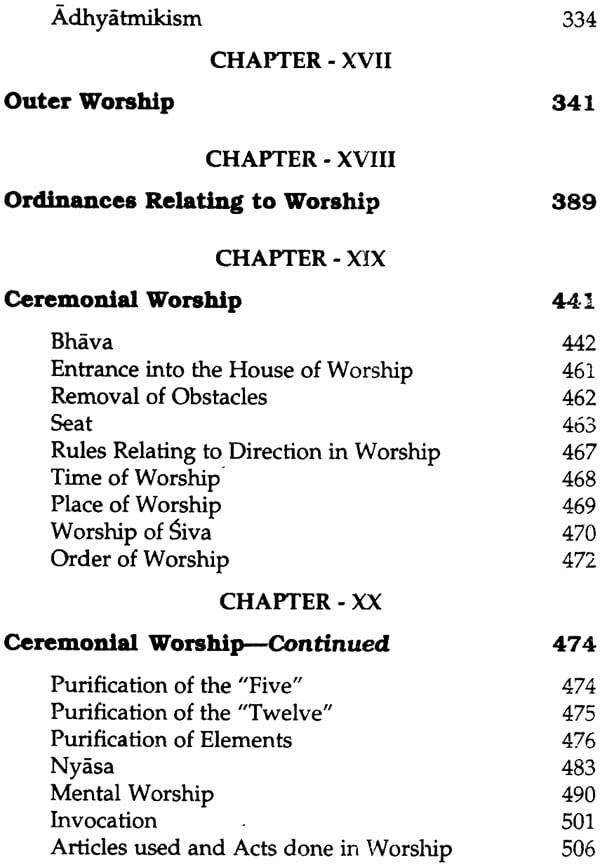
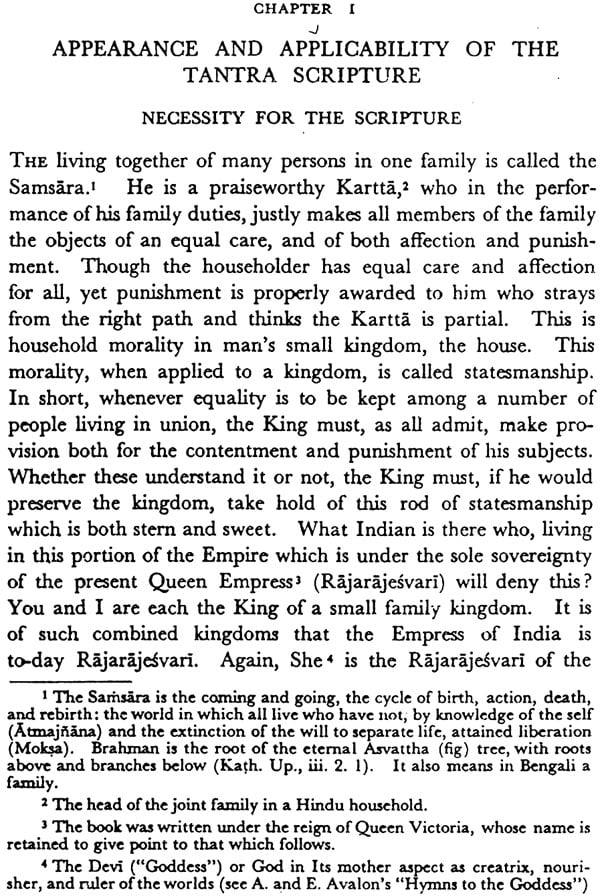


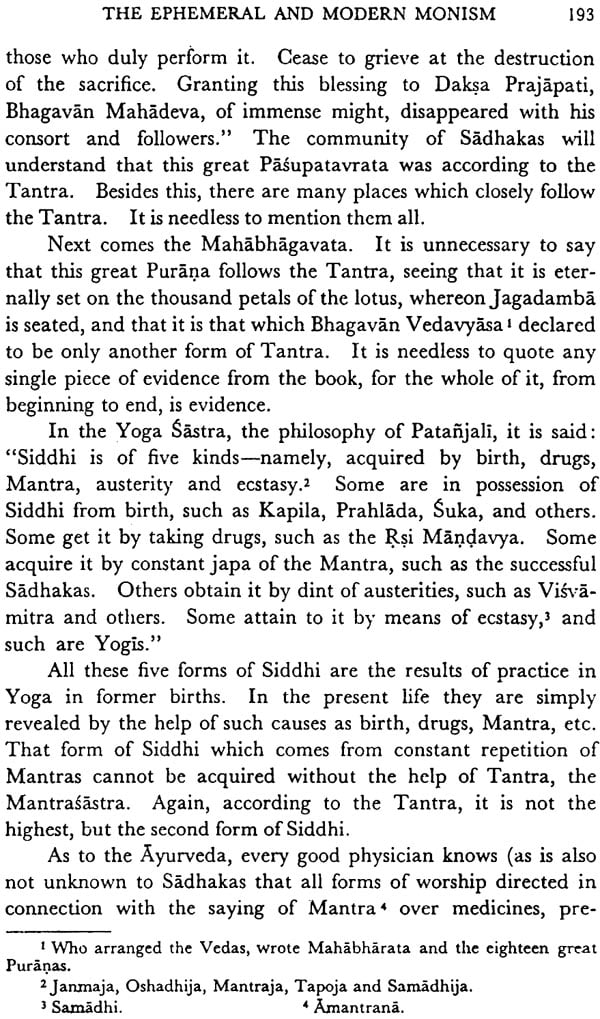
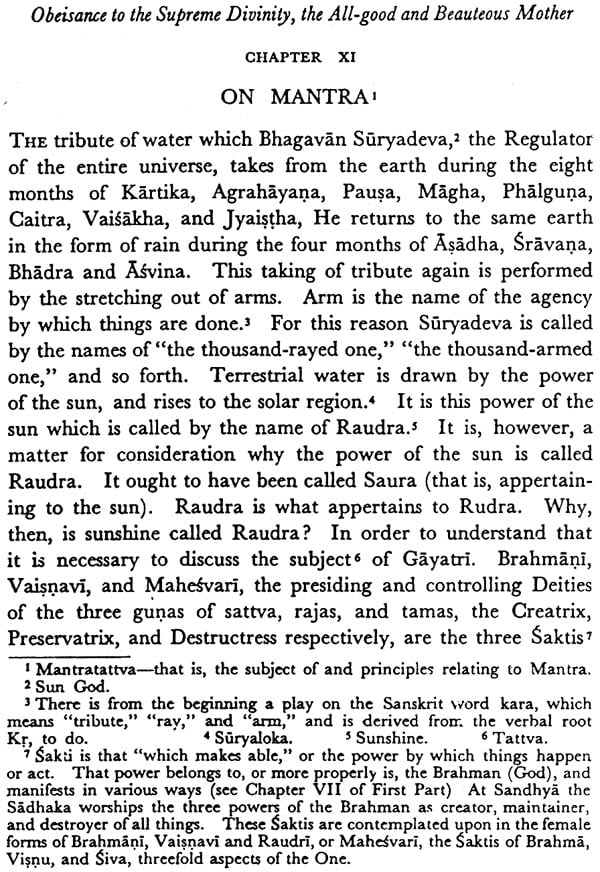


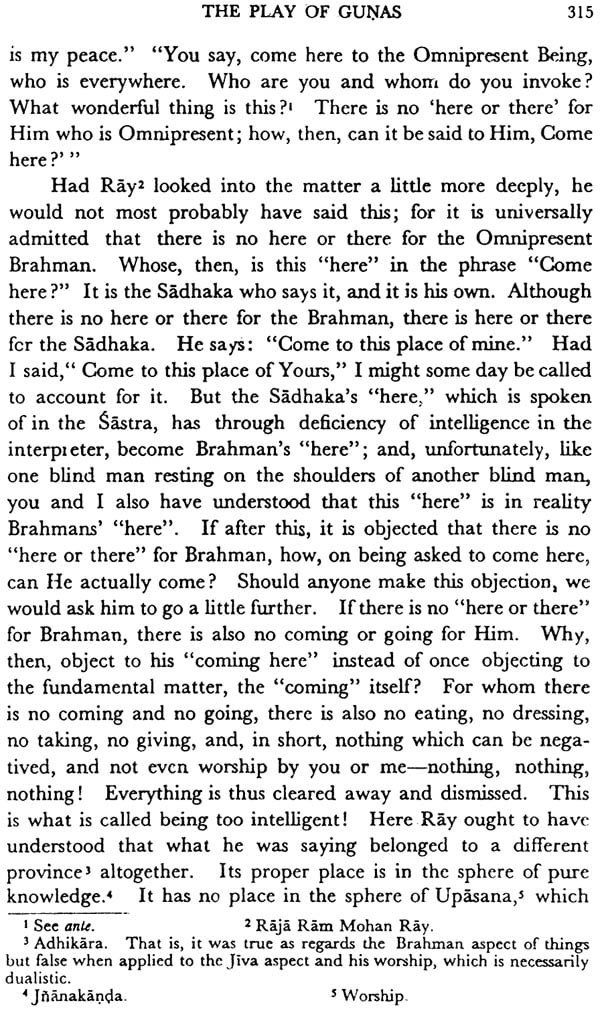
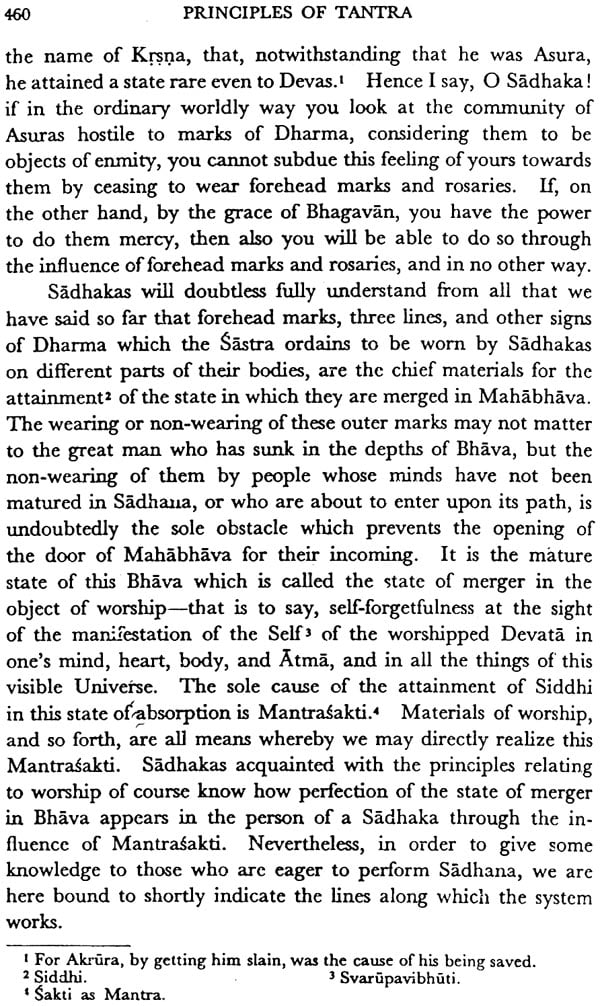

Delivery and Shipping Policy
- INTERNATIONAL SHIPPING
- Rs.1000-1100/kg
- ESTD. Delivery Time: 2-3 weeks (depending on location)
- Bubble Wrapped with Extra Padding
- NATIONAL SHIPPING
- NCR: Rs. 30/half kg
- Standard: Rs. 80/half kg
- Express shipments also available on Request
- ESTD. Delivery Time: Ranging from 1-4 days up to 7 business days (Depending on your choice of Delivery)
- TRACKING
- All orders; national or international, will be provided with a Tracking ID to check the status of their respective orders
- Depending on the Shipping Service, Tracking ID may be used on their respective tracking portals
Frequently Asked Questions (FAQs)
Domestic Shipping: 3-4 Days (after shipping)
International Shipping: 1-2 weeks (based on your location)
You will receive an email once your order has been shipped or you can email us if you didn't receive tracking details (info@mlbd.co.in)
Every book that we sell is the latest edition except all the rare books
Yes, we do provide free shipping, only on domestic orders (within India) above Rs.1500


